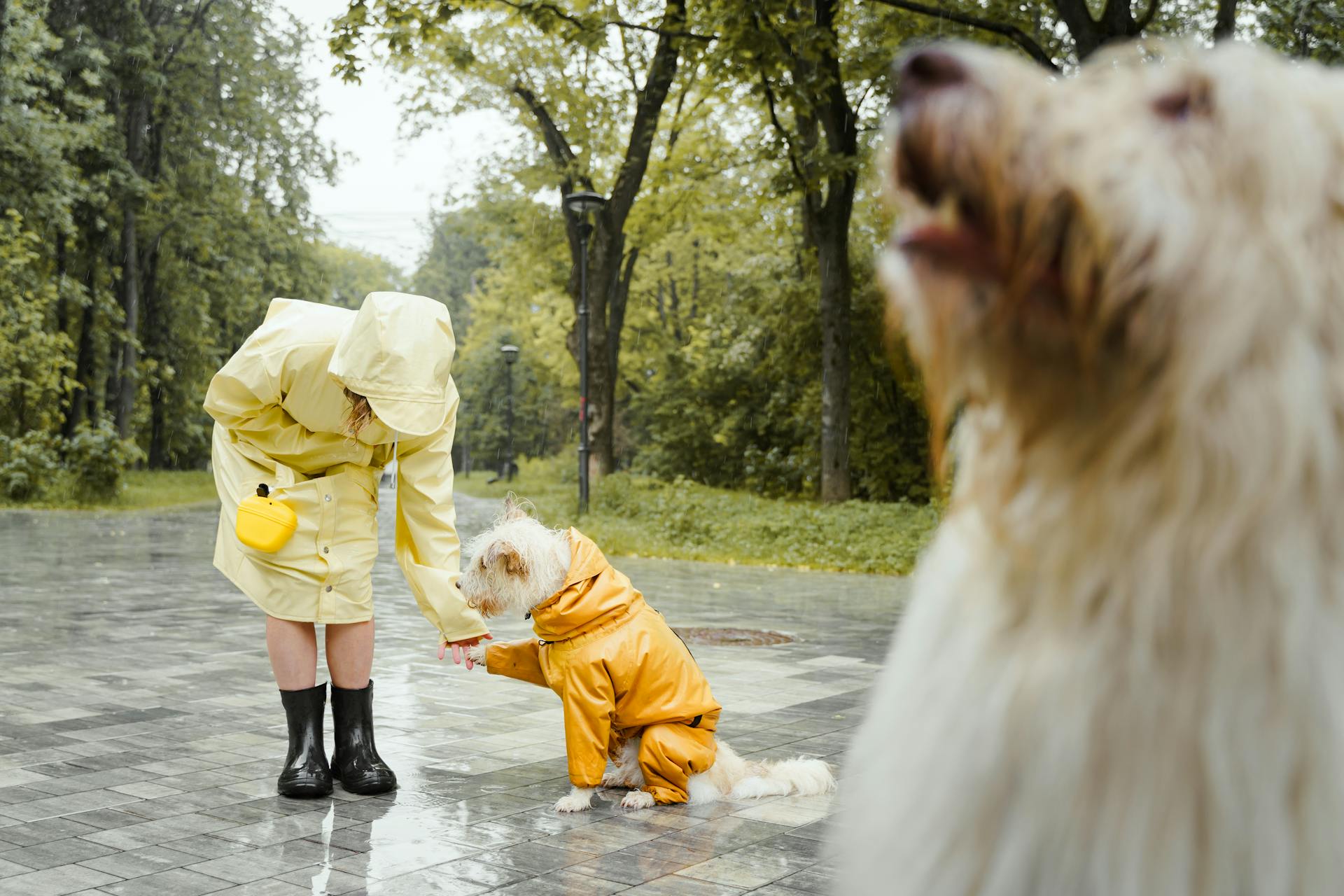
Animals getting zoomies is a normal behavior, especially in young animals. It's a natural way for them to burn off excess energy.
This high-energy behavior is most common in dogs, but it can also be seen in cats and other small animals. They tend to get zoomies after a period of rest or play.
Some animals get zoomies due to an excess of pent-up energy, often caused by confinement or boredom. This can lead to frantic running, jumping, and playing.
In some cases, animals may get zoomies as a way to self-soothe or calm themselves down.
What Are Zoomies?
Zoomies are a common phenomenon where animals suddenly become hyperactive, running around frantically for no apparent reason.
This behavior is often accompanied by excessive panting and rapid breathing, which can be a sign of excitement or stress.
Animals of all ages and species can get zoomies, from puppies to senior cats and even horses.
Zoomies can be triggered by a variety of factors, including changes in environment, social interactions, or even just a burst of energy.
Some animals may exhibit zoomies as a way to release pent-up energy, while others may use it as a form of play or exploration.
In dogs, zoomies often start with a sudden burst of energy, causing them to run around in circles or make rapid changes in direction.
Cats, on the other hand, tend to exhibit zoomies by running up and down furniture or leaping from one piece of furniture to another.
Zoomies can be a source of entertainment for pet owners, but they can also be a sign of underlying issues, such as anxiety or excess energy.
Why Do Animals Get Zoomies?
Dogs get zoomies due to excess energy and pent-up excitement, often triggered by playtime or exercise.
Some dogs exhibit this behavior as a way to release tension and pent-up energy, which is especially common in high-energy breeds.
Dogs can get zoomies at any time of day or night, as seen in the example of "midnight madness".
Their frenetic random activity periods (FRAPs) can be intense and entertaining, but also exhausting for the dog.
This behavior is a natural way for dogs to get some exercise and have fun, and it's not a sign of craziness or demon possession, as some might jokingly call it.
Are Zoomies Safe?
Zoomies are generally safe as long as your dog has a safe space to run around without obstacles to get in the way.
It's essential to provide a safe environment for your dog to zoom around, such as a carpeted room to prevent slipping or a fully fenced yard.
A dog that zooms frequently might be spending too much time in the crate or dealing with too much stress.
If your dog zooms often in the house, it may be a sign that they're not getting enough physical and mental stimulation.
Preventing and Managing Zoomies
Preventing and managing zoomies is crucial to ensure your pet's safety and happiness.
Increasing physical exercise is a great way to lessen the degree or frequency of zoomies. This can be achieved by engaging your dog in breed-appropriate exercise or encouraging your cat to play.
Most dogs will outgrow zoomies at a fairly young age, but in the meantime, providing a good amount of physical and mental stimulation is essential. This can be done by challenging your dog mentally or engaging your cat in play.
Providing more play, activity, and stimulation during the day may help prevent zoomies at inopportune times. This can be especially helpful if your pet tends to get the zoomies when you're trying to sleep.
Dog zoomies are not harmful to your pet, but it's essential to ensure they are safe and cannot run into things or hurt themselves. Make sure to create a pet-friendly environment to prevent accidents.
Zoomies can be triggered by various factors, including novel or stressful events, confinement, and overstimulation. If you suspect your pet's zoomies are related to an underlying issue, consult with a veterinarian for advice.
Many animals, including horses, rabbits, guinea pigs, and even giraffes, can experience FRAPs or "the zoomies."
Zoomies in Specific Animals
Dogs are notorious for their zoomies, but they're not the only ones who get into this energetic behavior. Horses, for example, exhibit similar bursts of energy, especially after a long period of rest or inactivity.
Some dogs, like Labrador Retrievers, are more prone to zoomies due to their high energy levels and strong instinct to run and play. This is likely a leftover from their hunting heritage, where speed and agility were essential for survival.
Horses, on the other hand, tend to zoom around in a more controlled manner, often in a circular motion, as they're trying to burn off excess energy and get some exercise. This behavior is especially common in young horses, who have plenty of energy to spare.
Cats, like Bengal cats, can get zoomies too, but they tend to be more short-lived and intense, often lasting only a few seconds. They might also be triggered by a sudden burst of energy or excitement, such as chasing a toy or seeing a bird outside.
In horses, zoomies can be a sign of boredom or lack of stimulation, especially if they're not getting enough physical or mental activity. Providing them with a variety of toys, puzzles, and exercise options can help reduce this behavior.
A different take: Do Big Cats Get Zoomies
Sources
- https://www.akc.org/expert-advice/lifestyle/what-are-zoomies/
- https://www.livescience.com/why-pet-dogs-cats-race-around.html
- https://www.vet.cornell.edu/departments-centers-and-institutes/riney-canine-health-center/canine-health-information/what-are-zoomies
- https://www.petplan.co.uk/pet-information/dog/advice/zoomies/
- https://pattonvethospital.com/blog/904804-why-do-pets-get-the-zoomies
Featured Images: pexels.com


